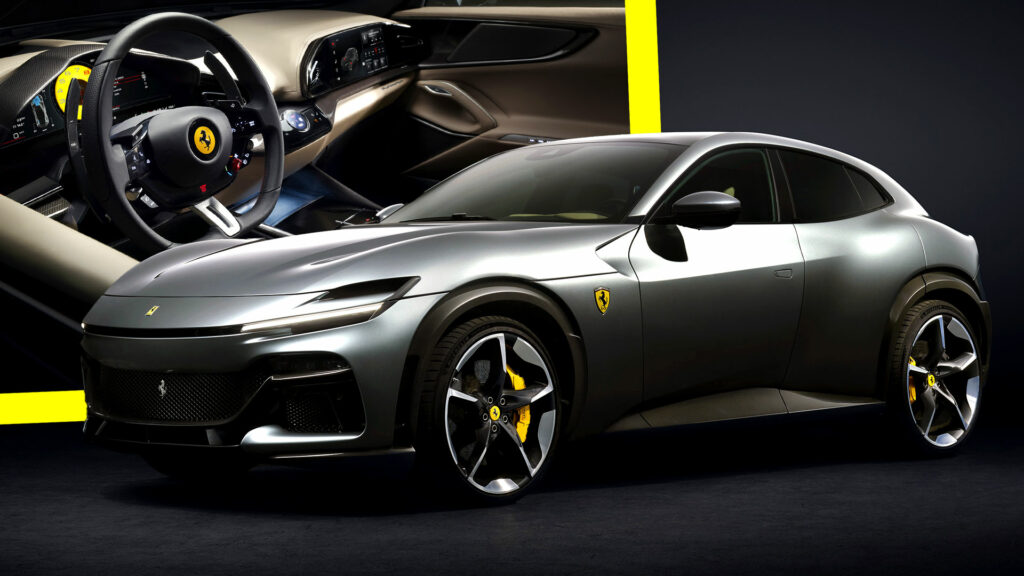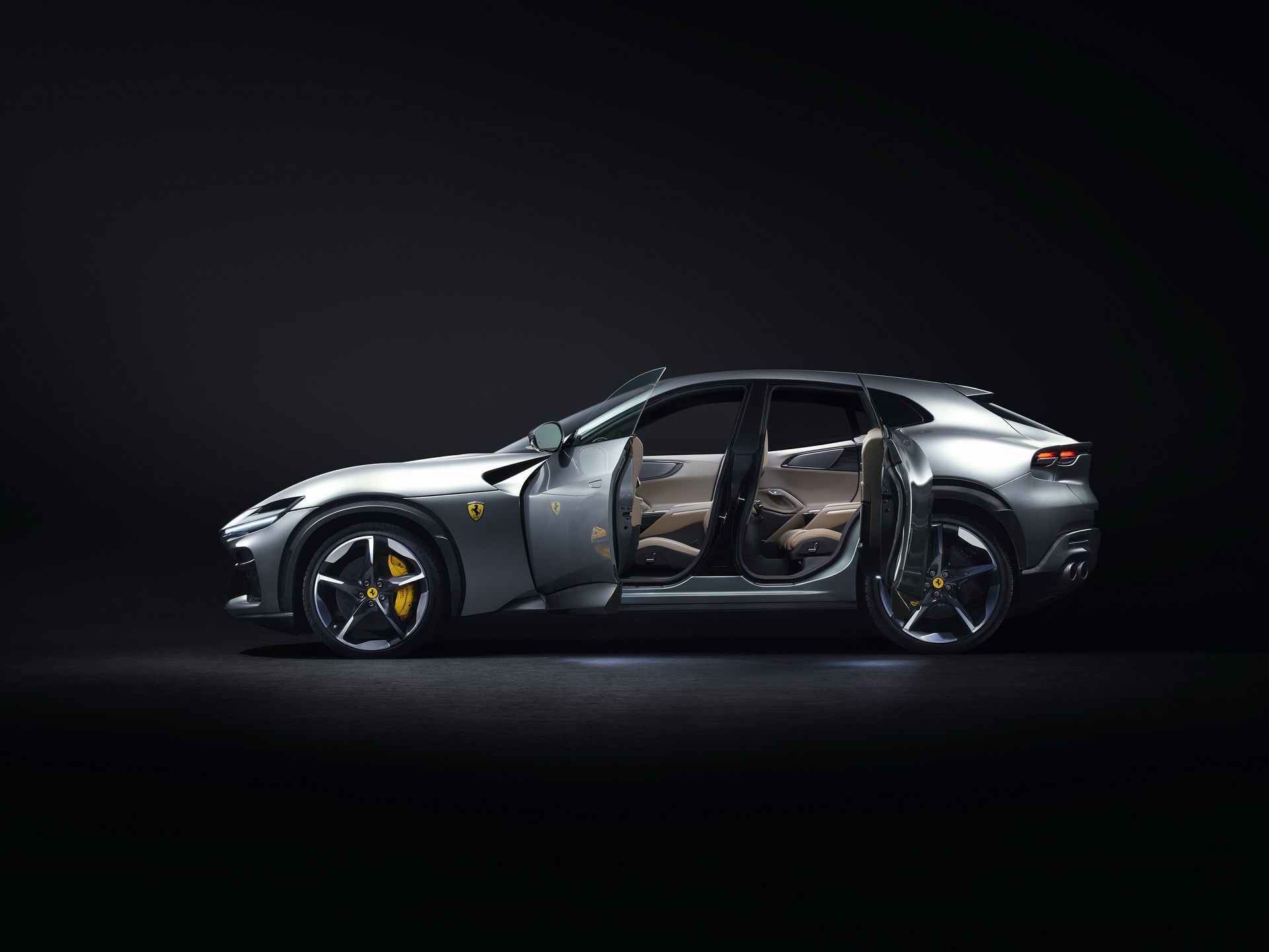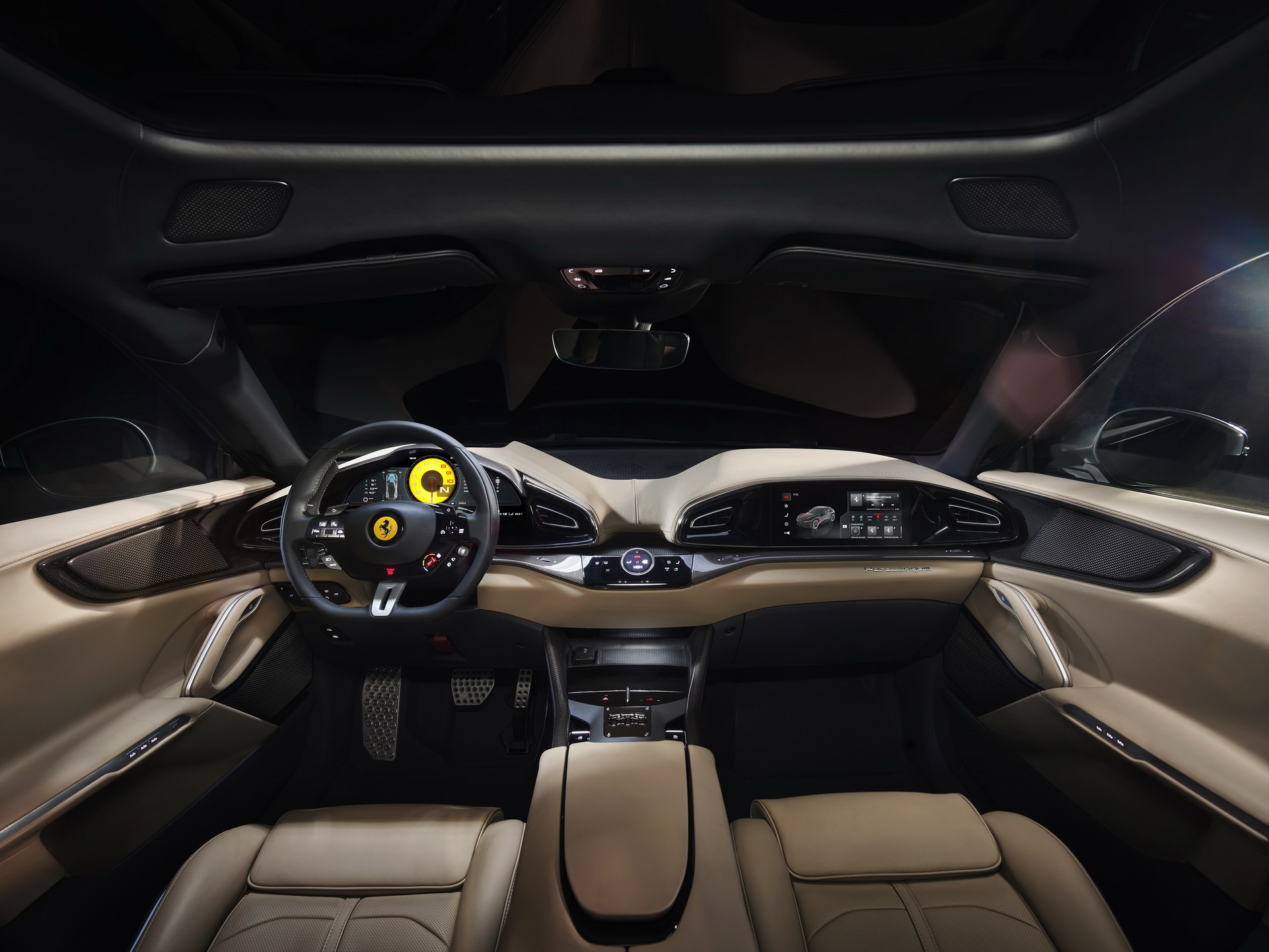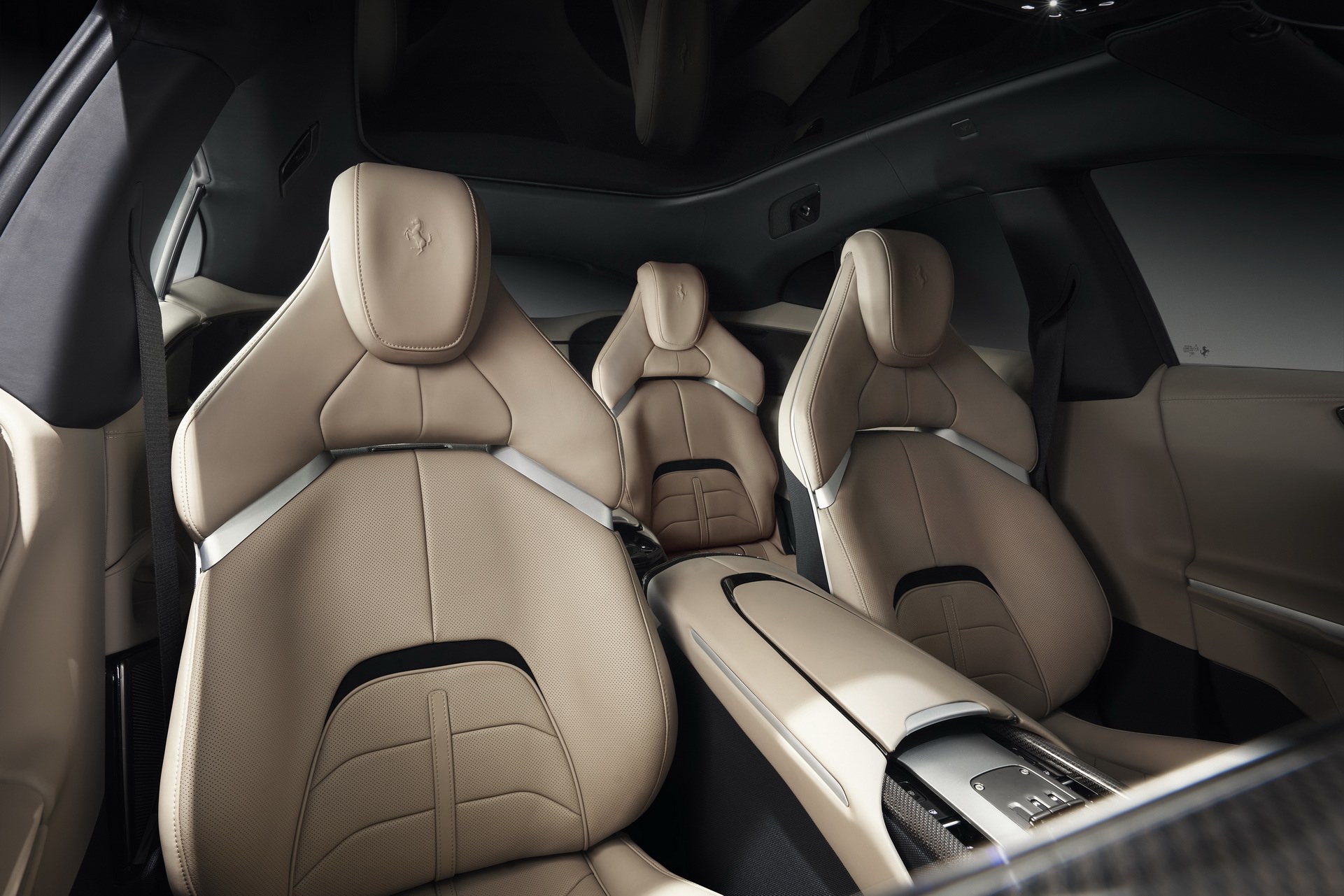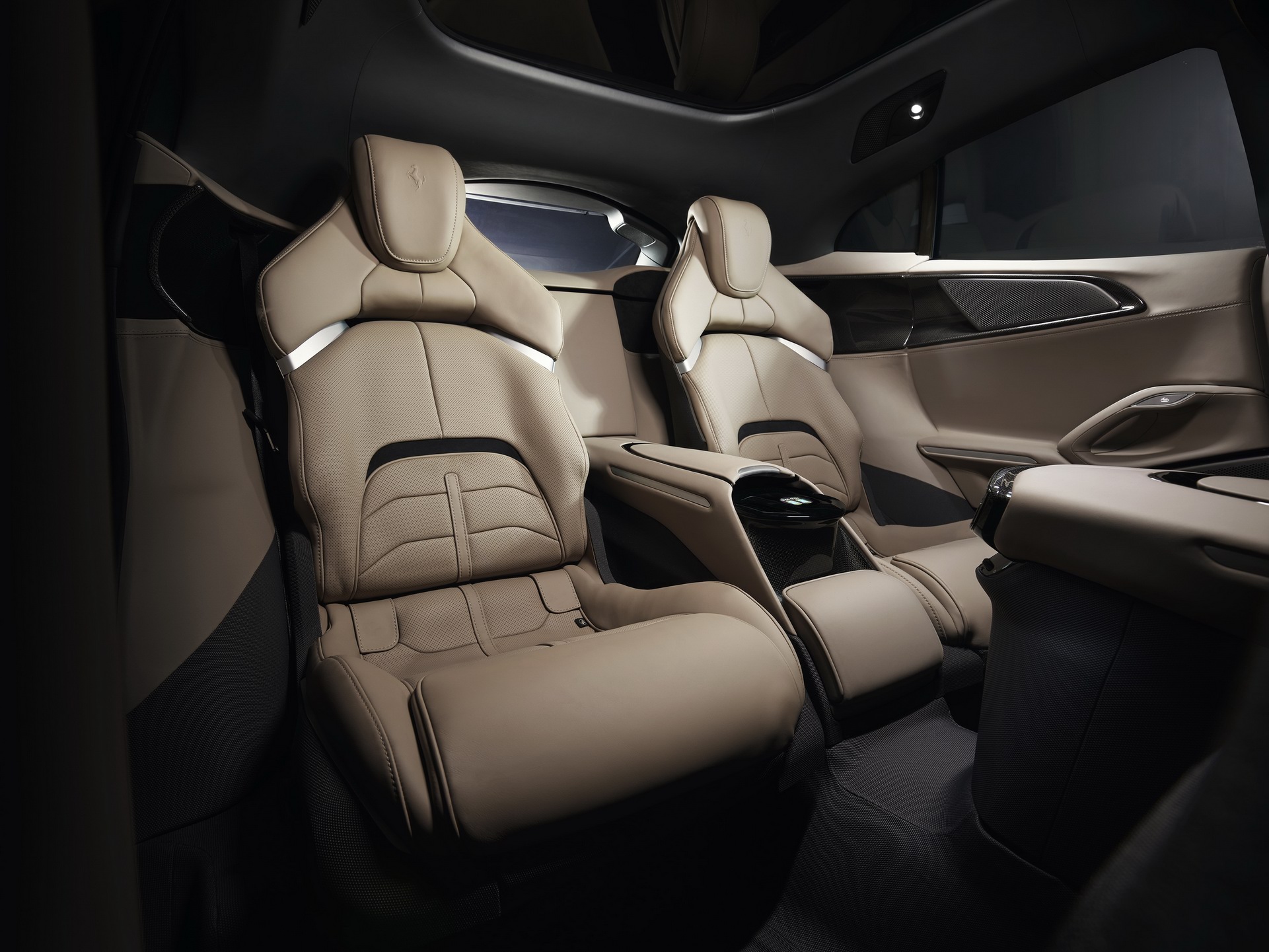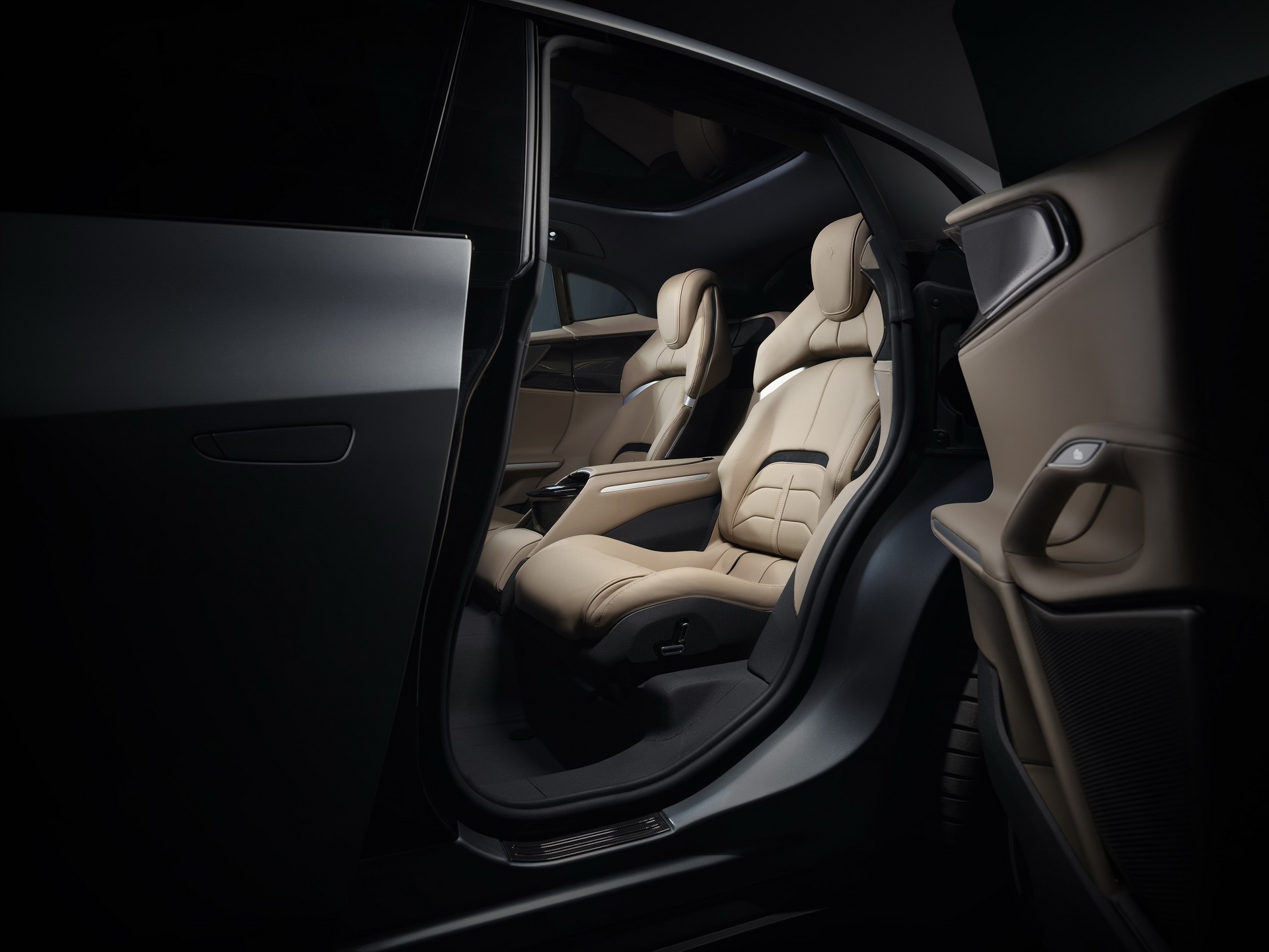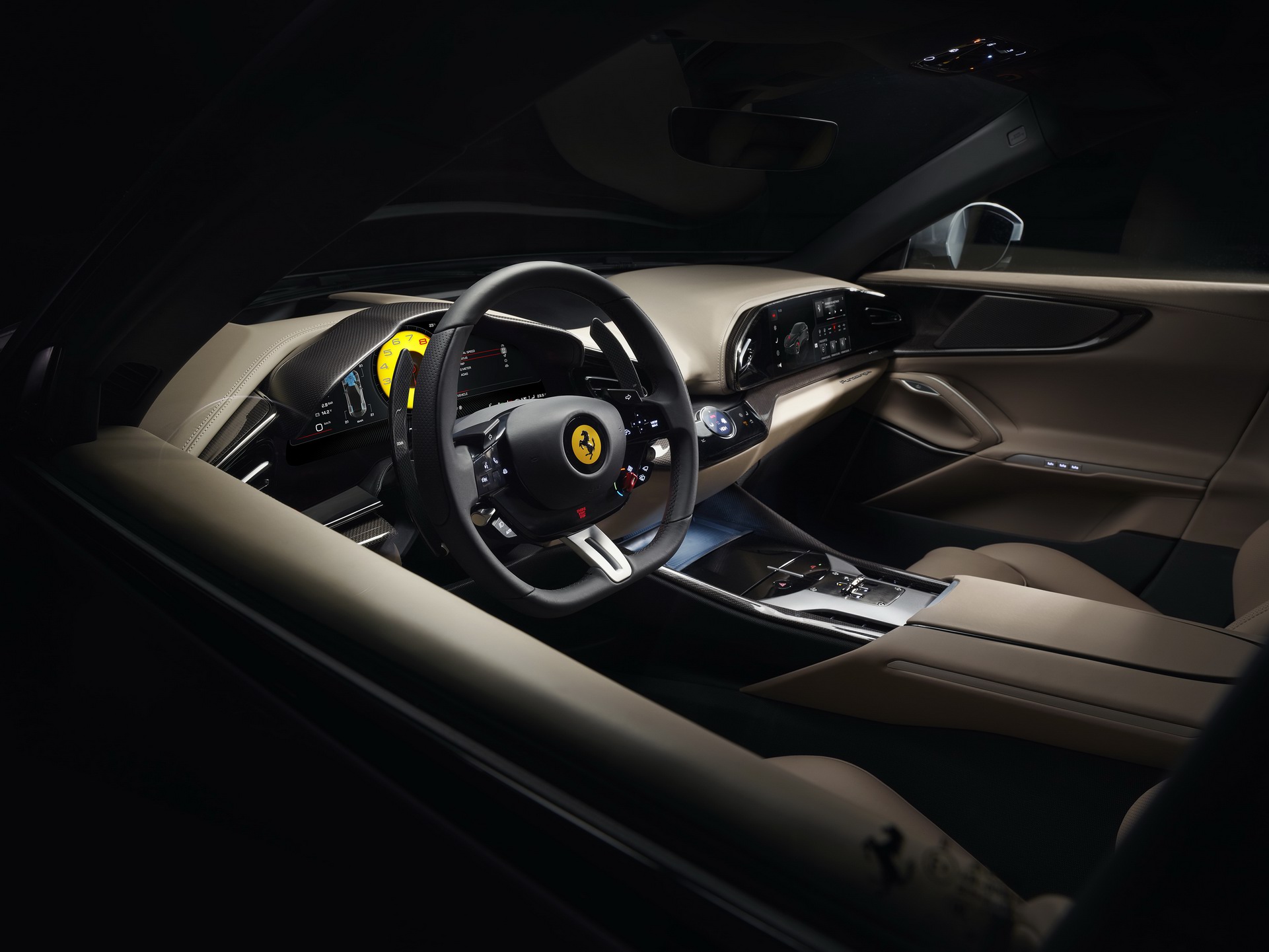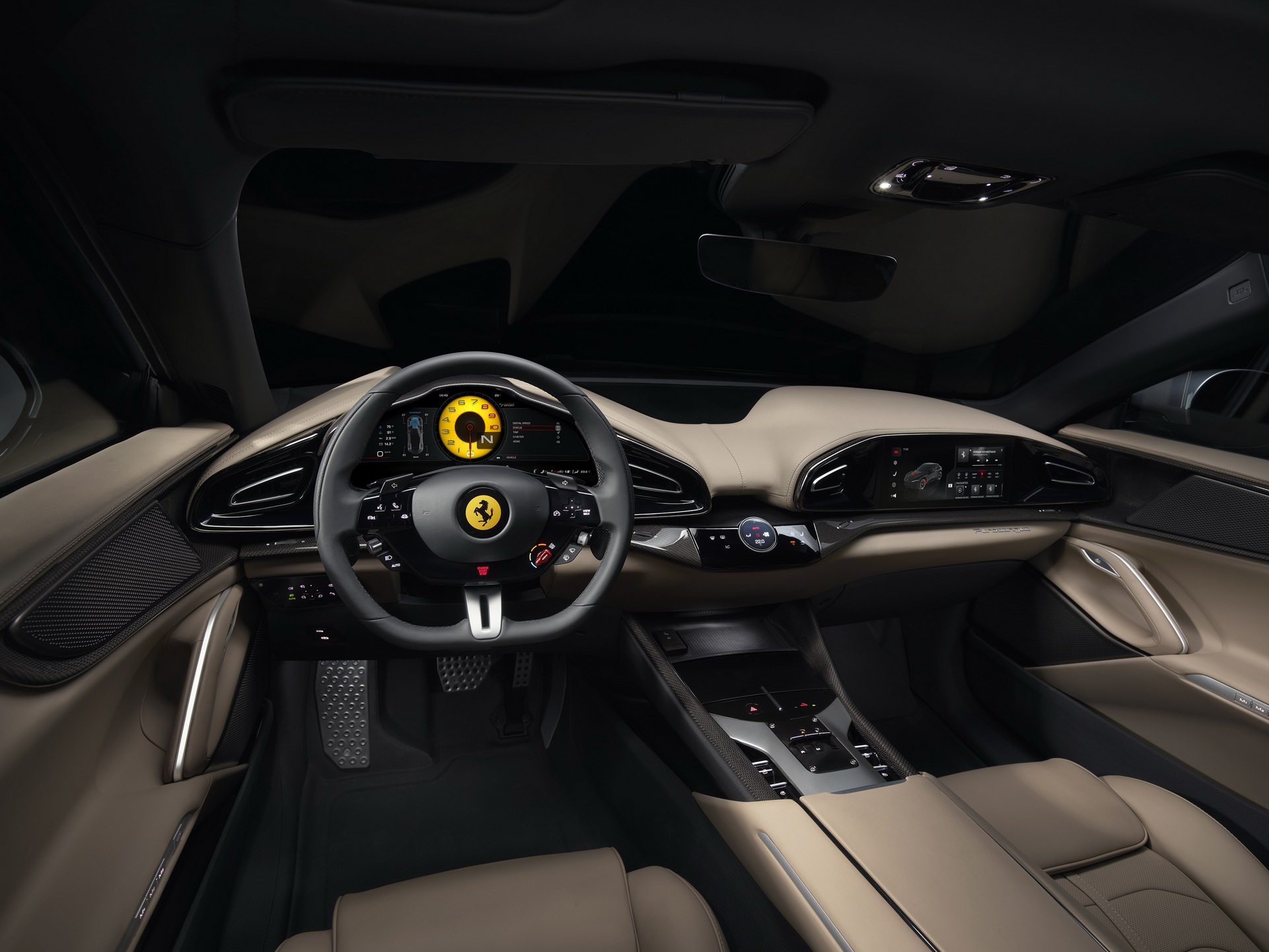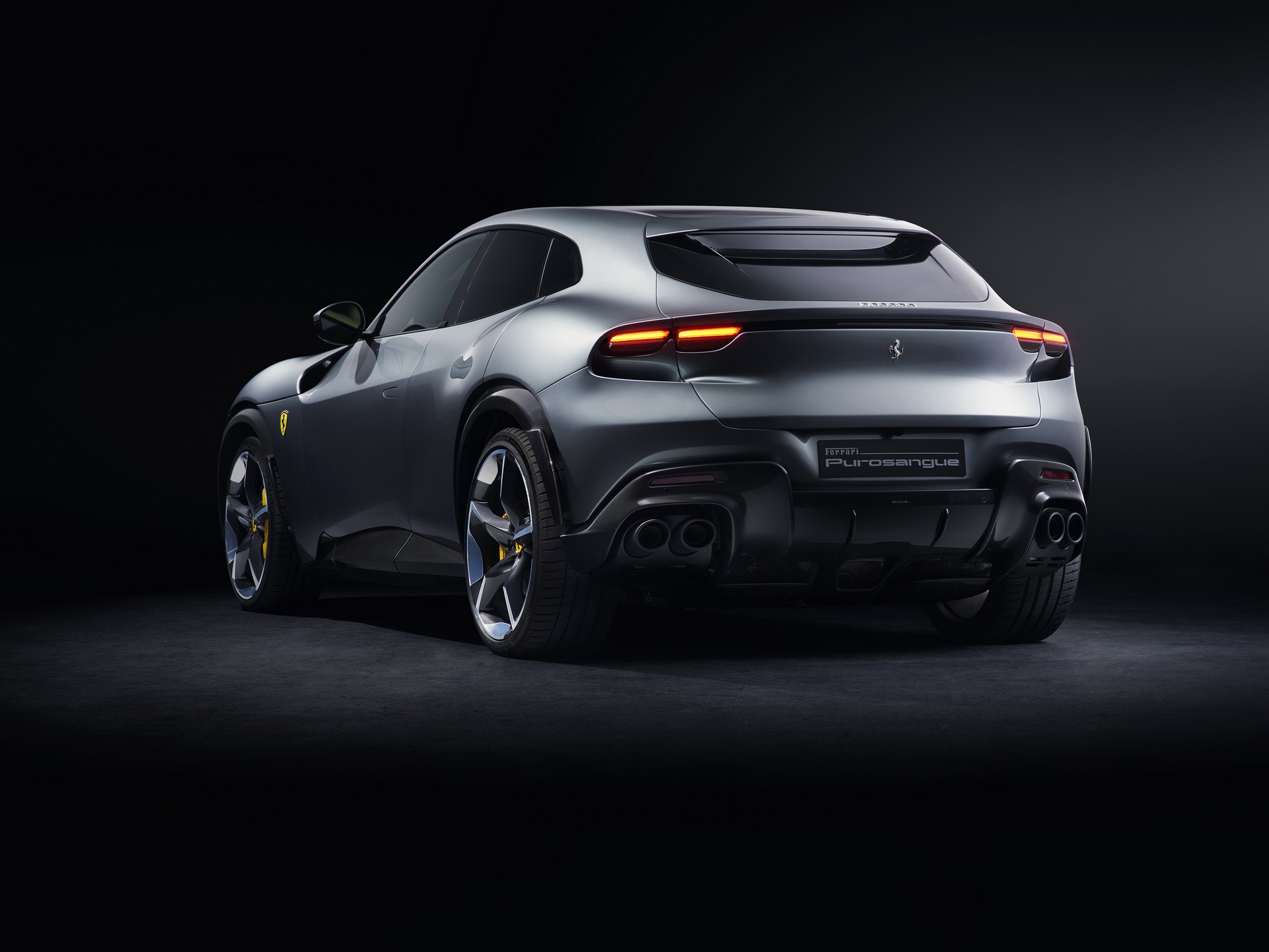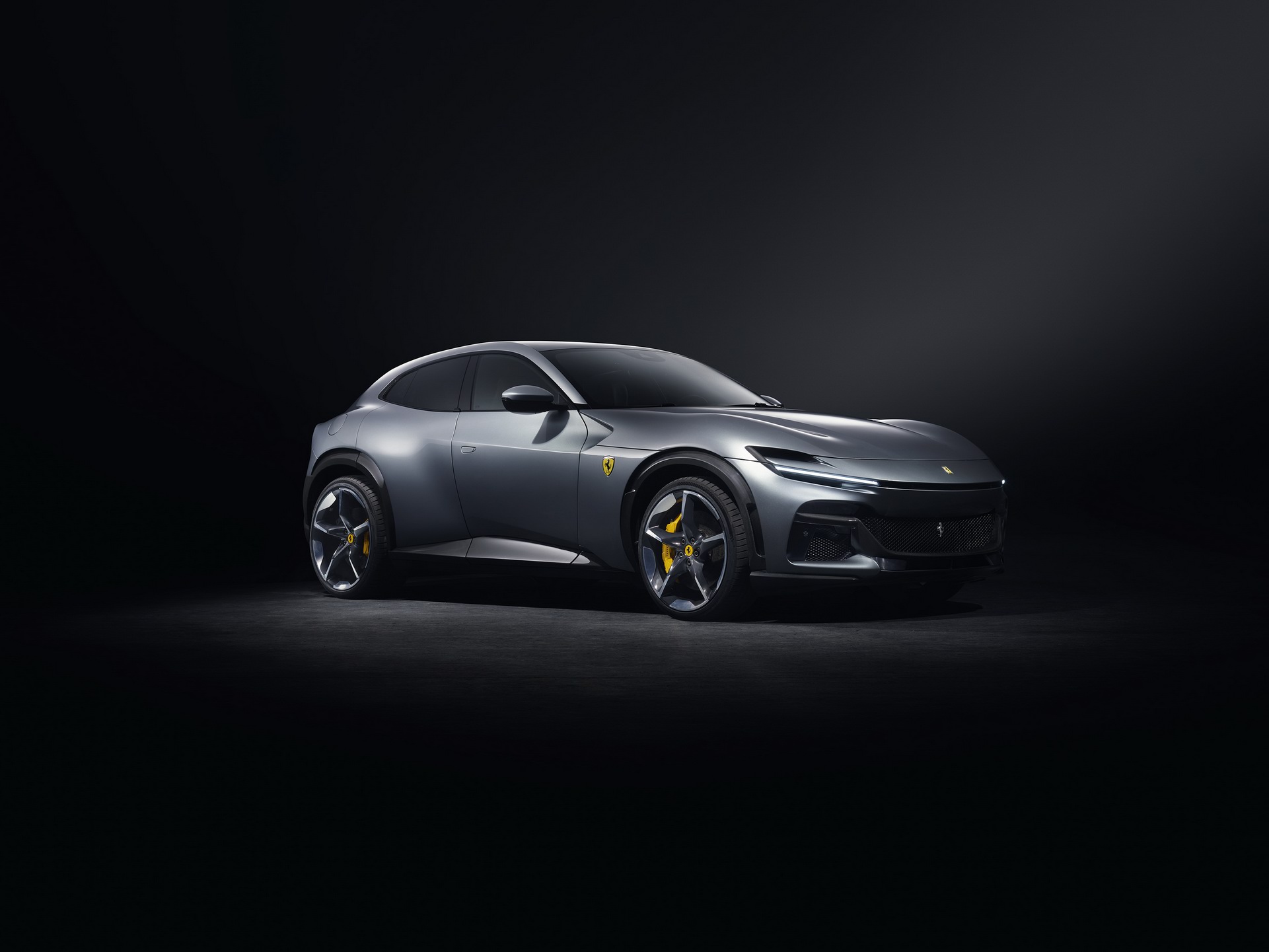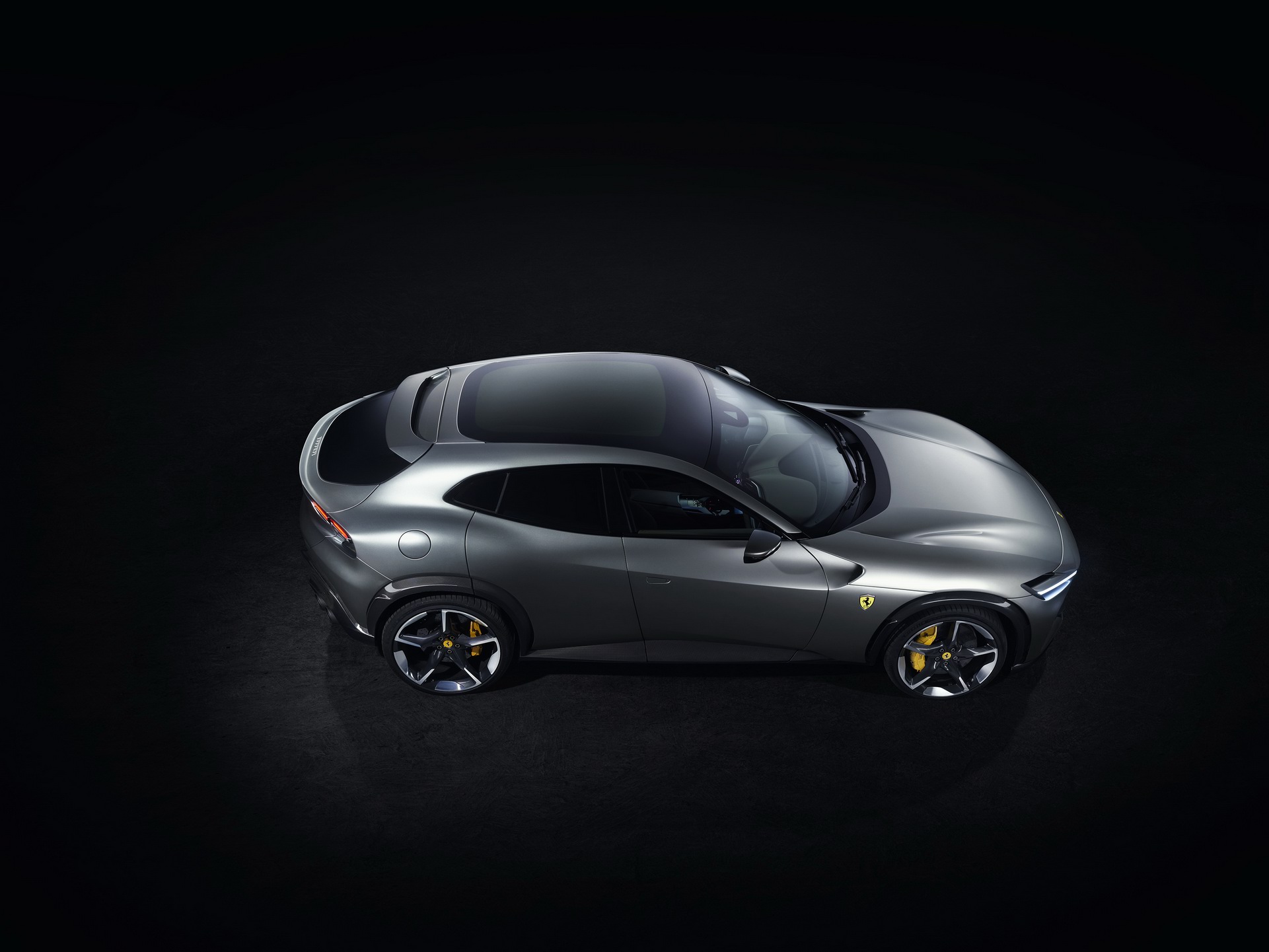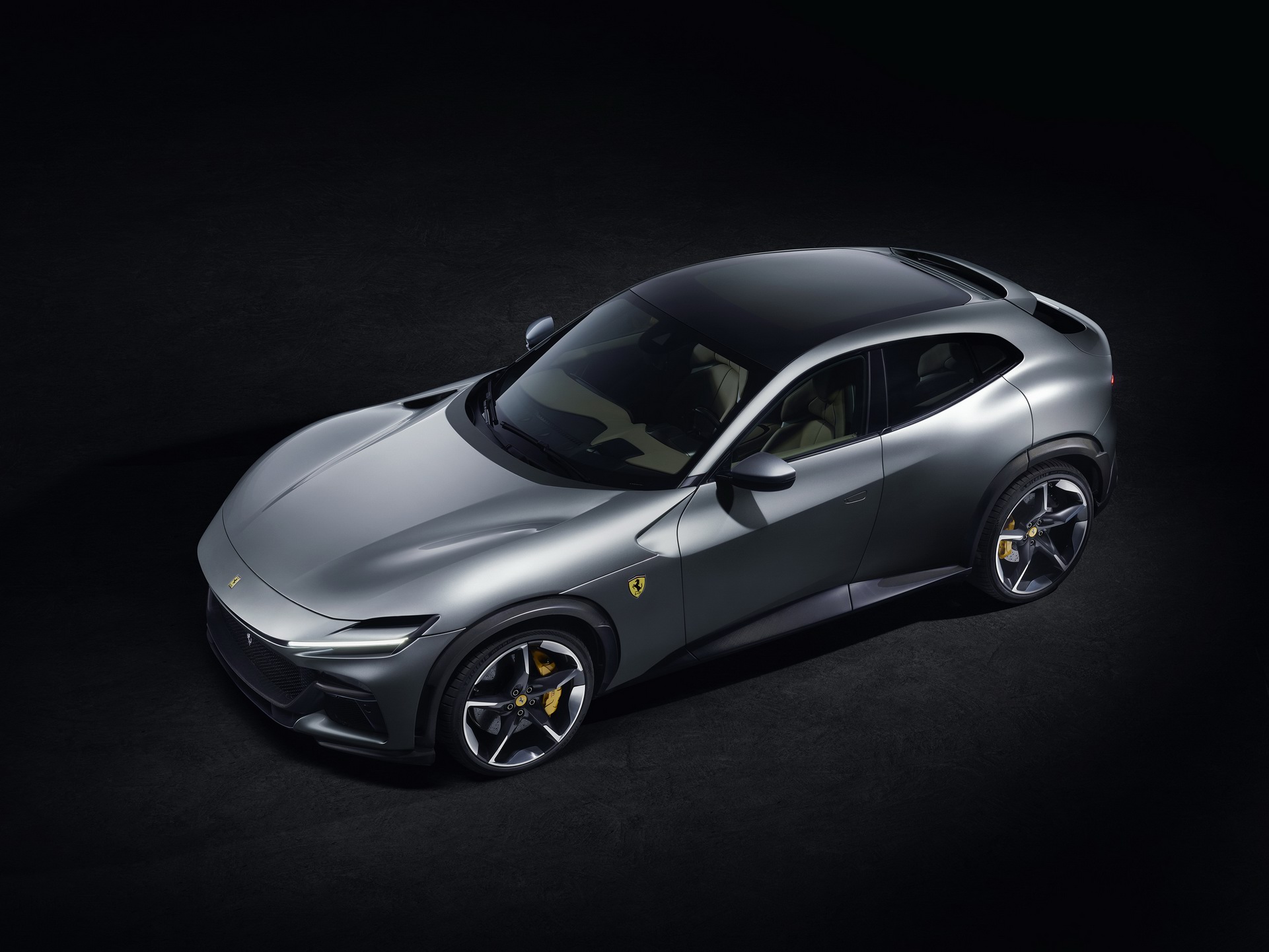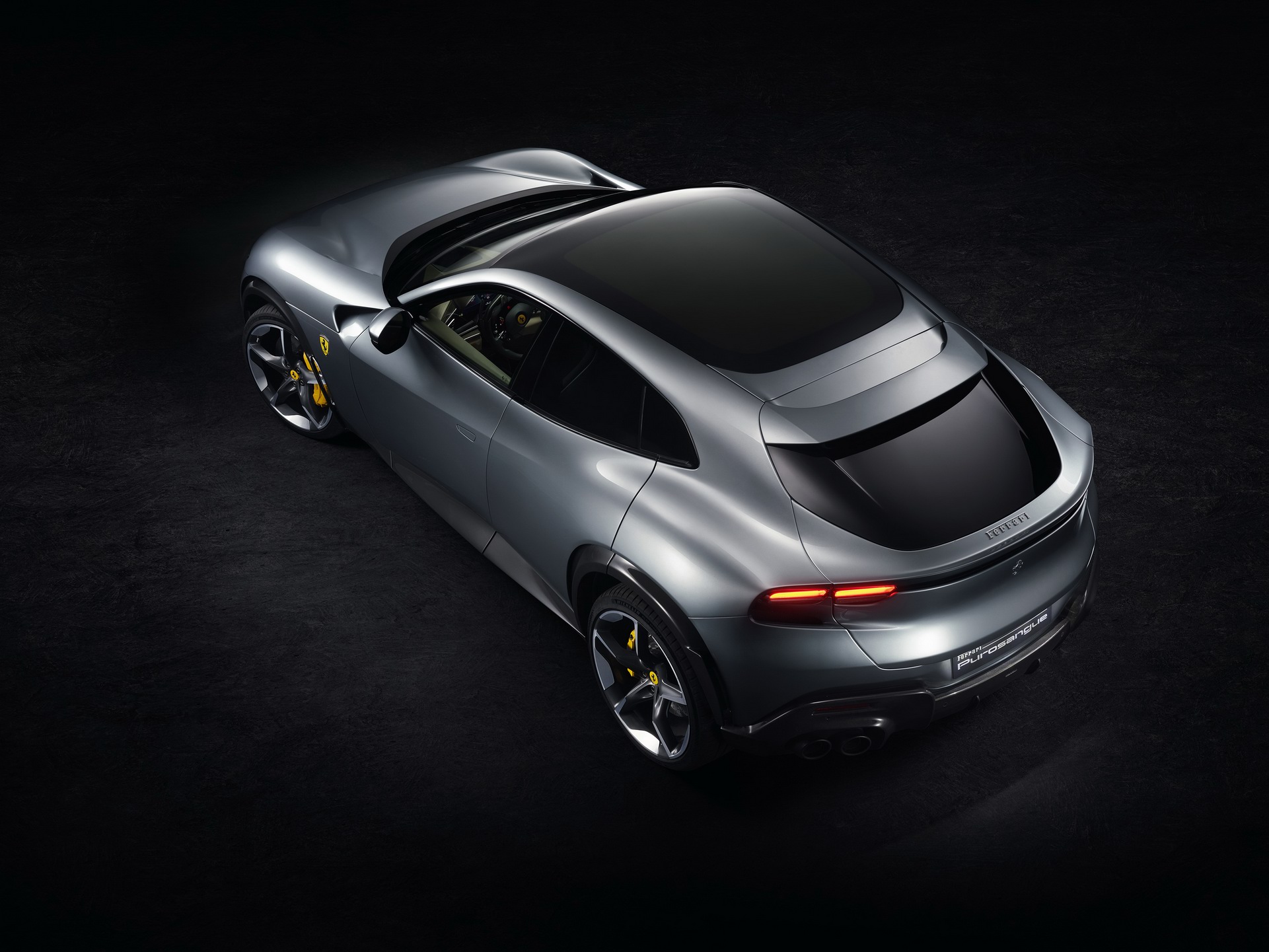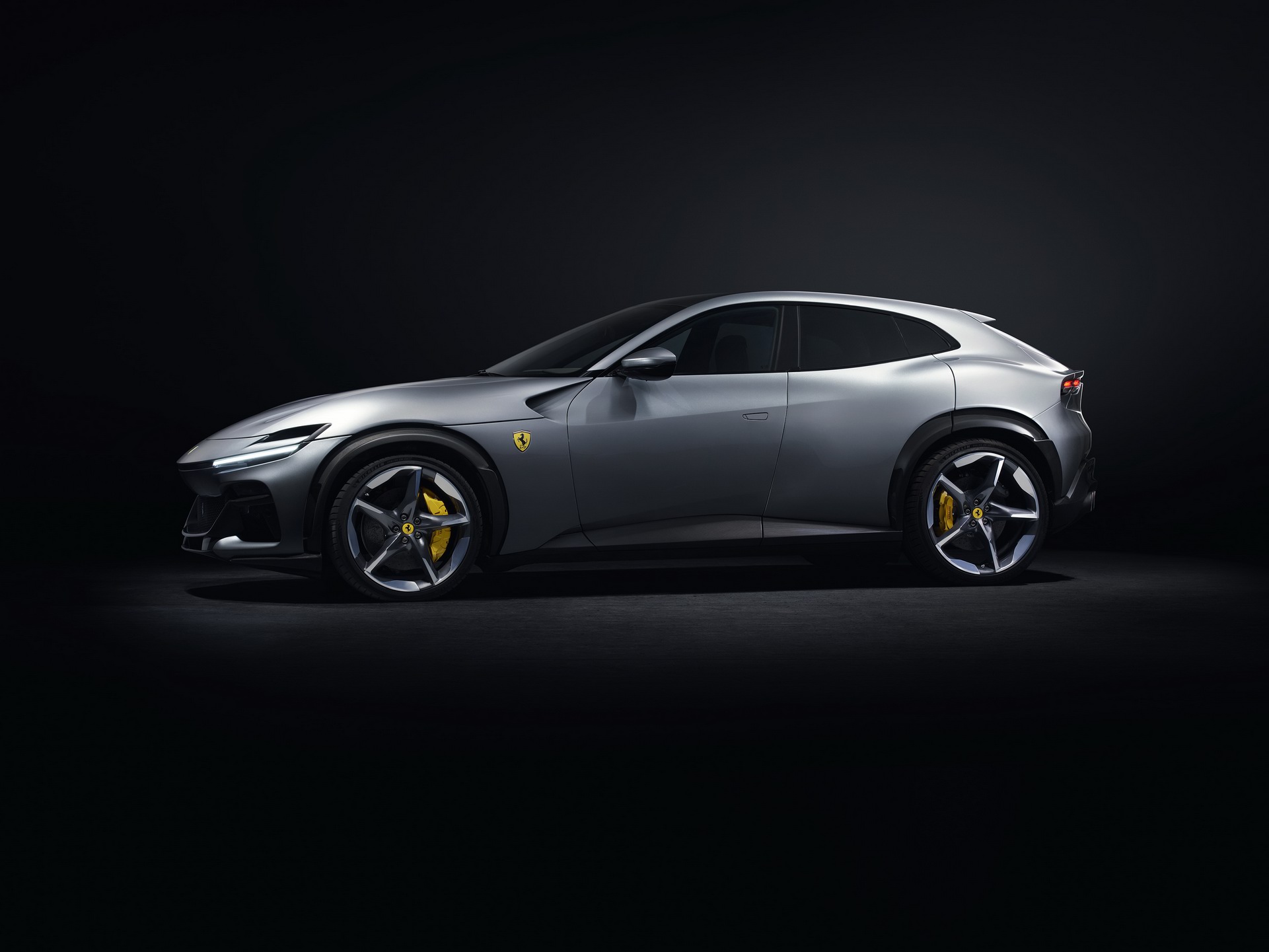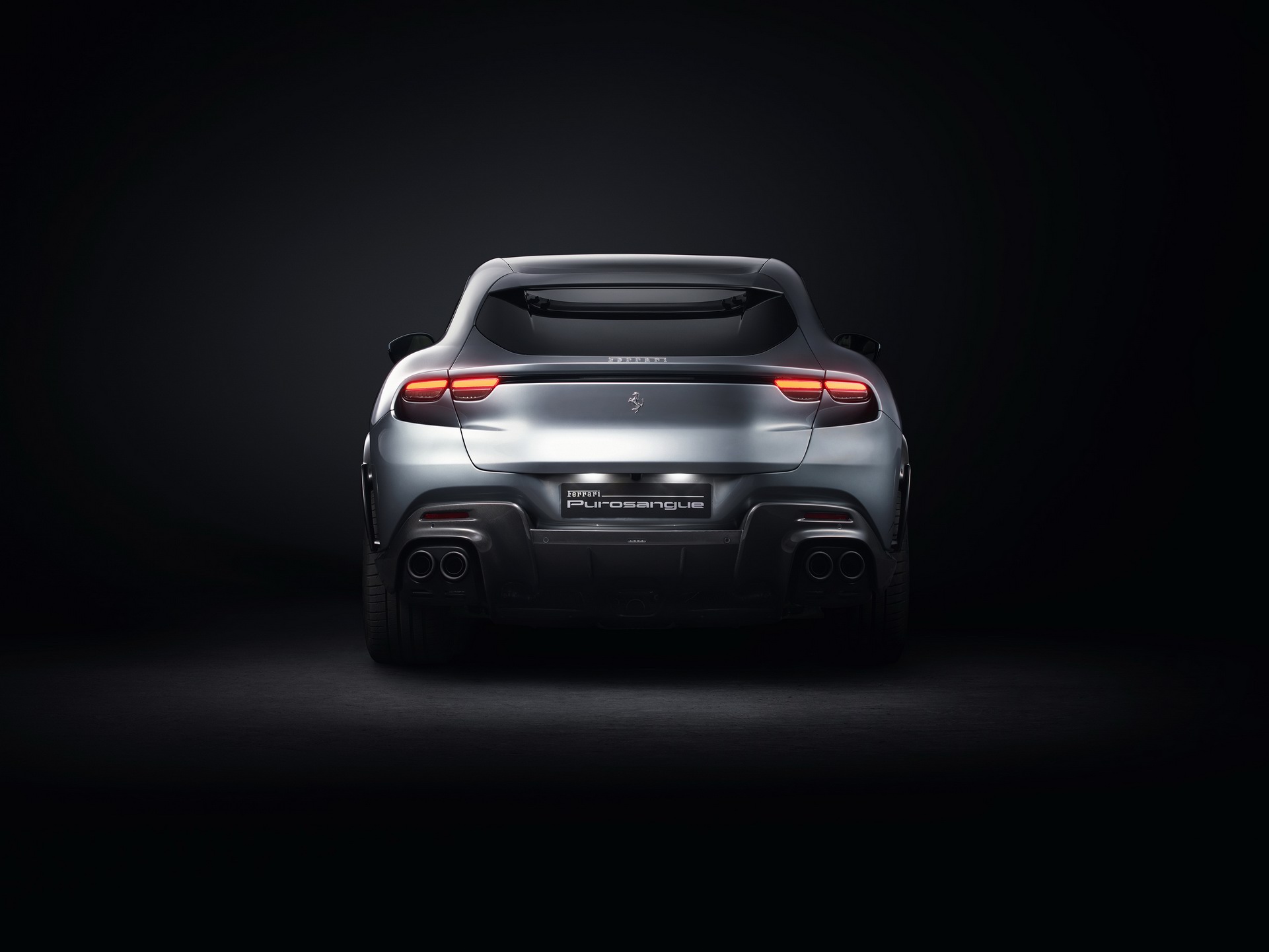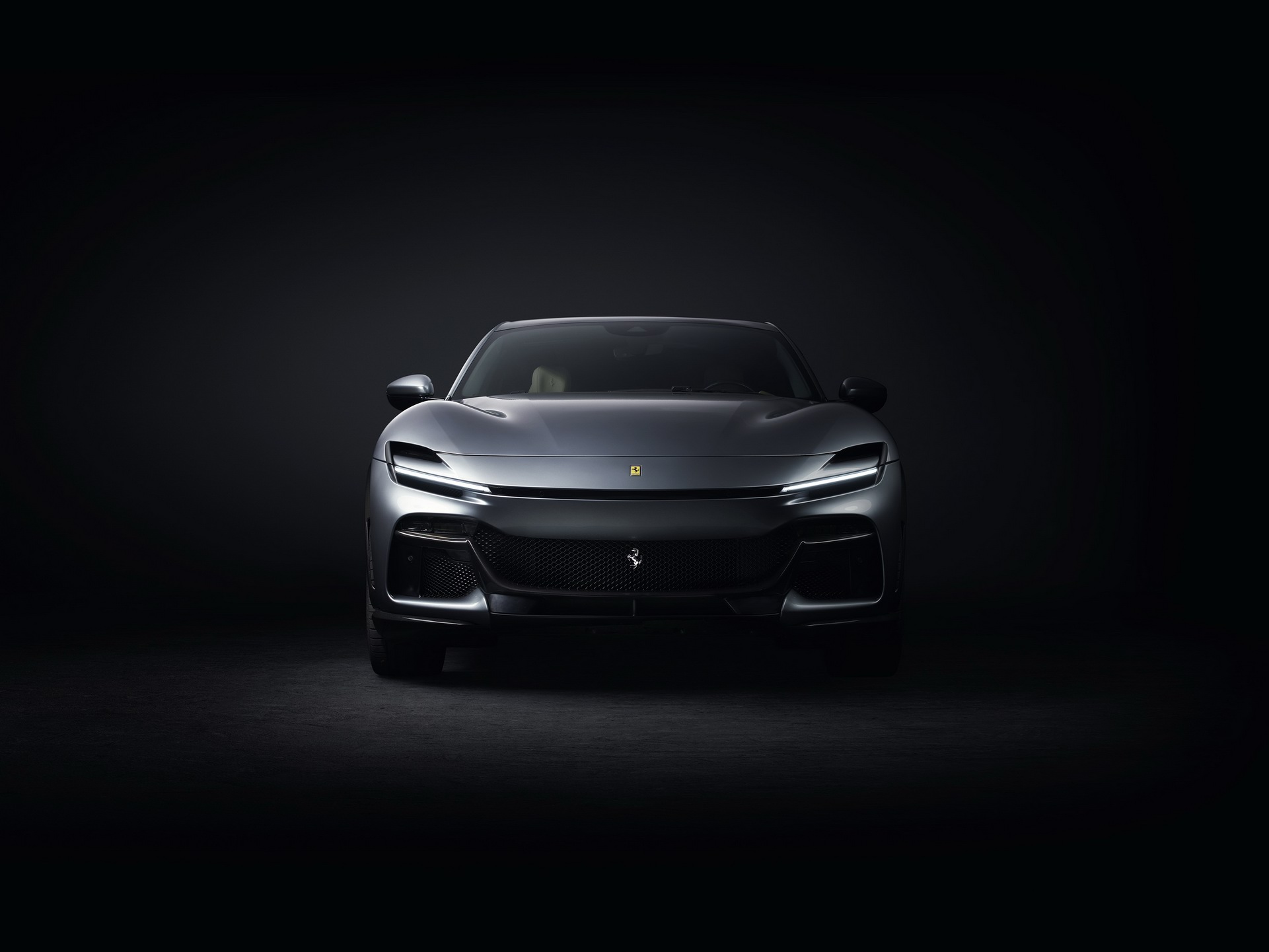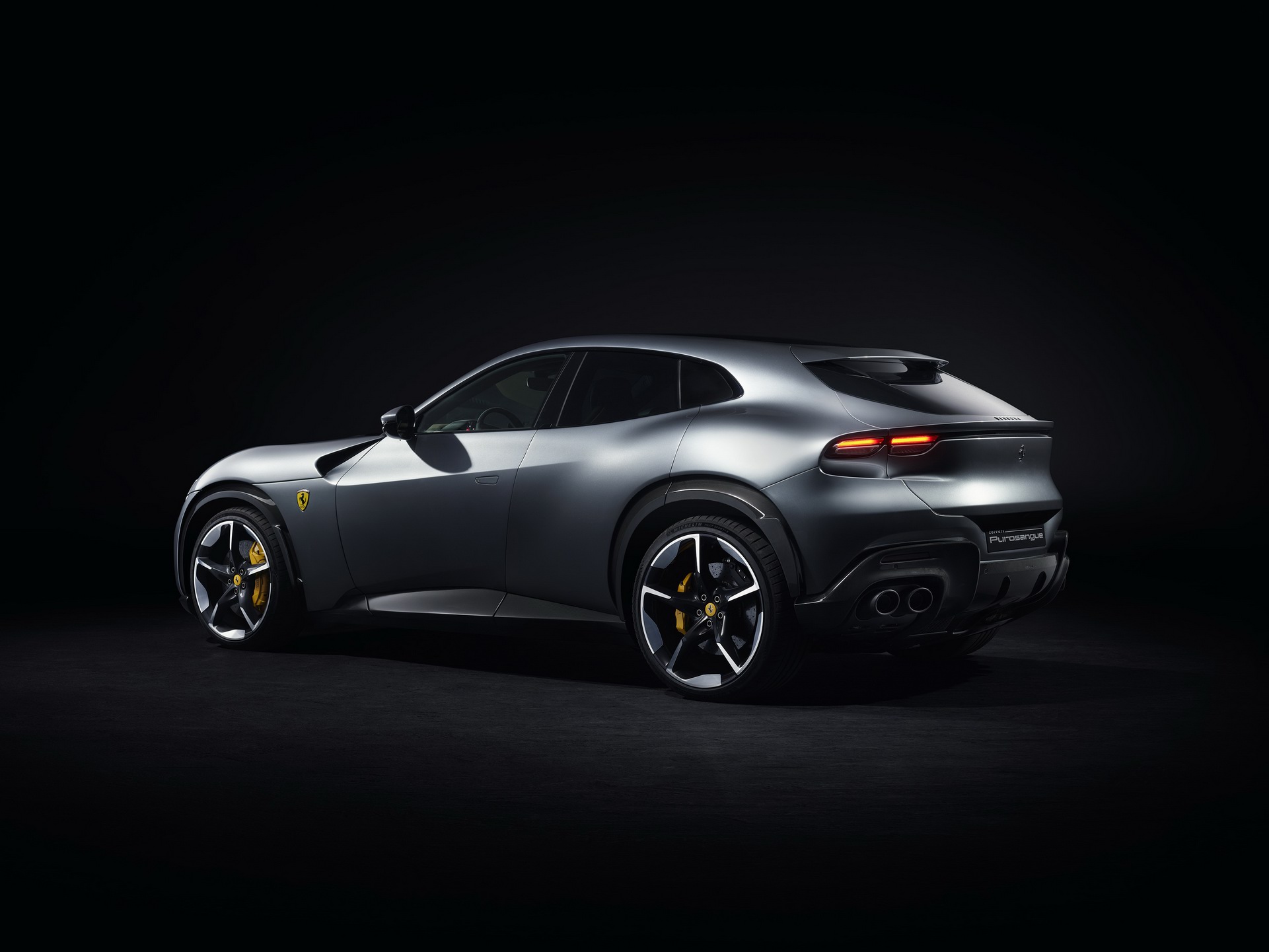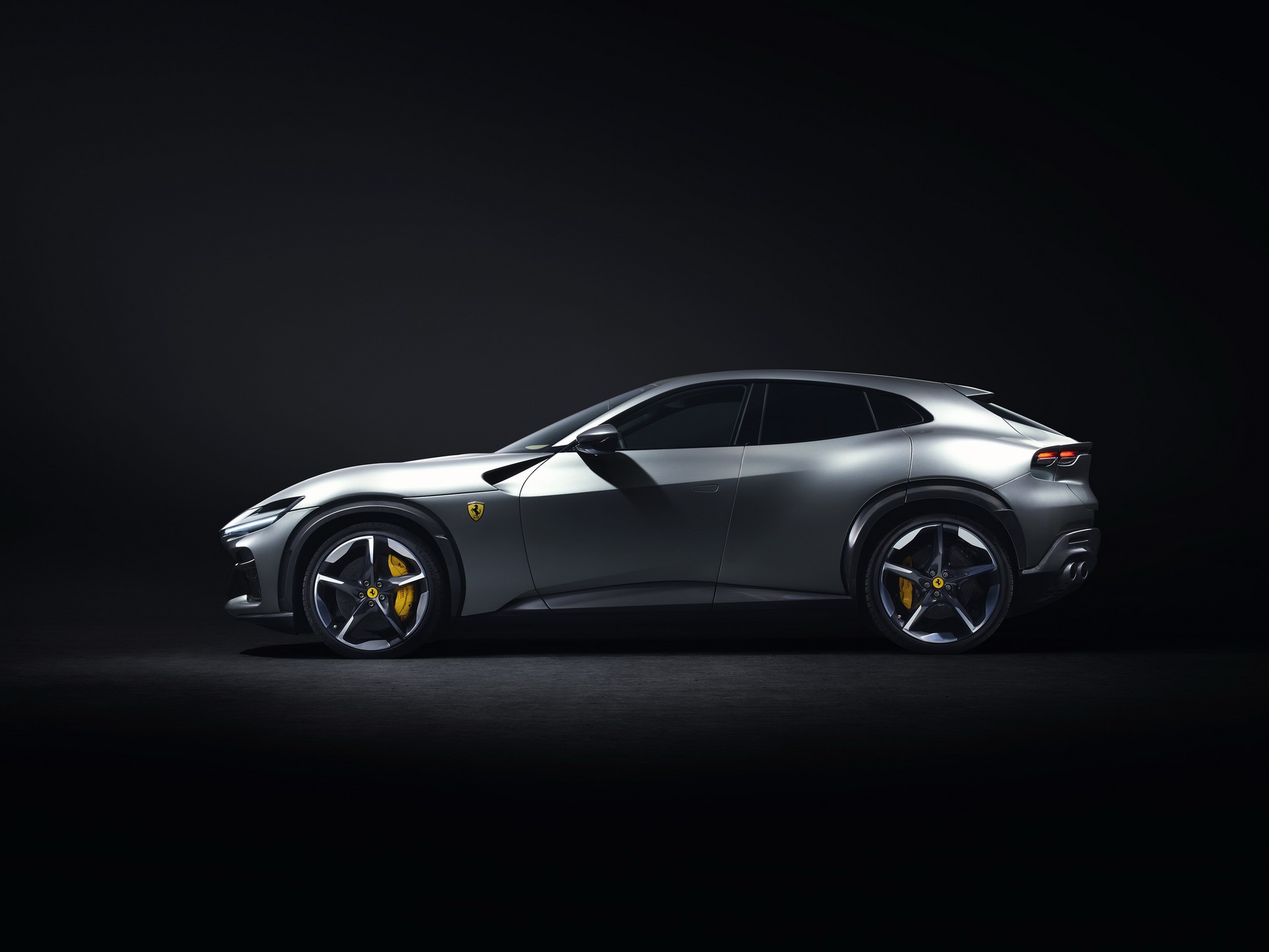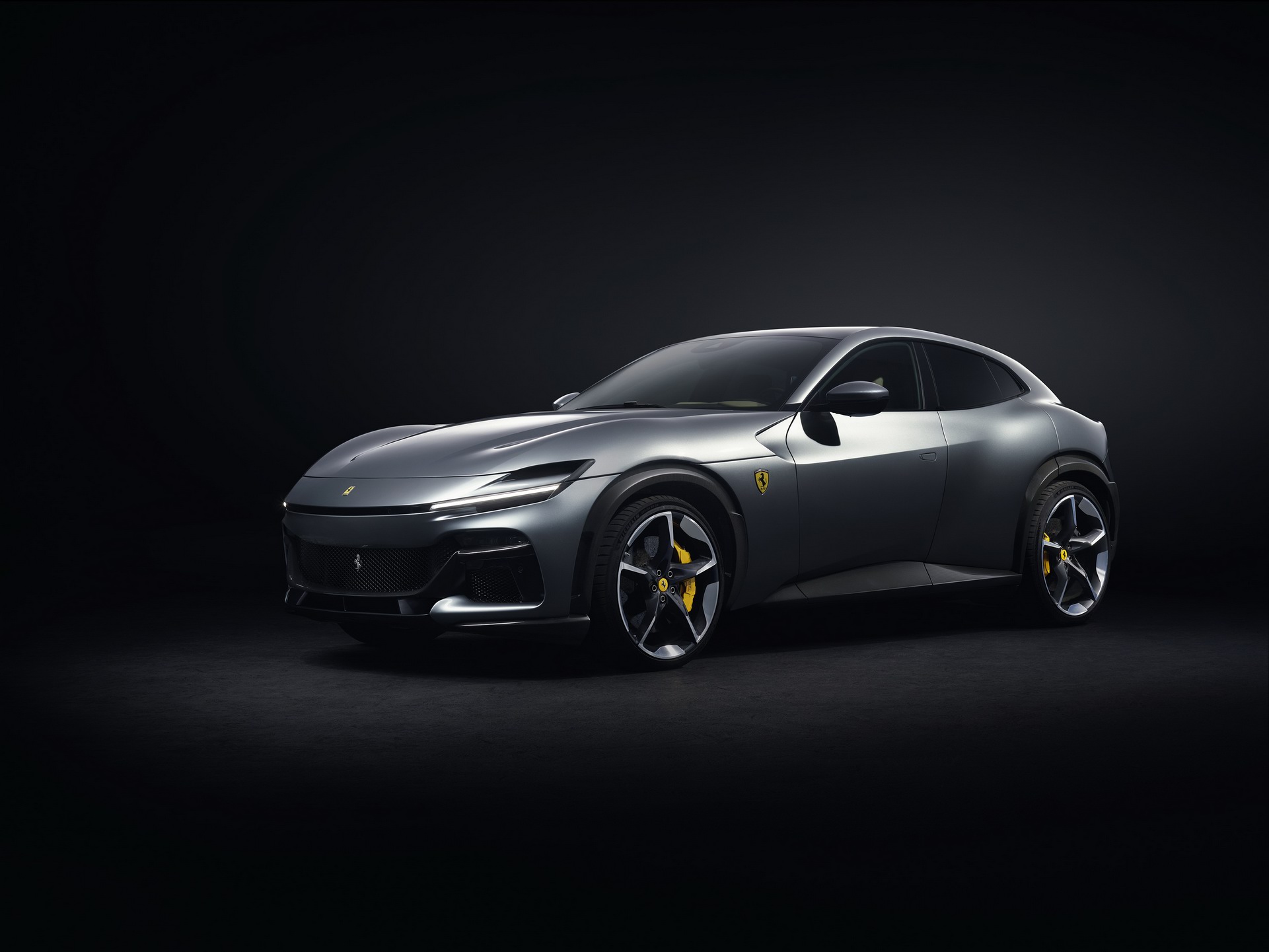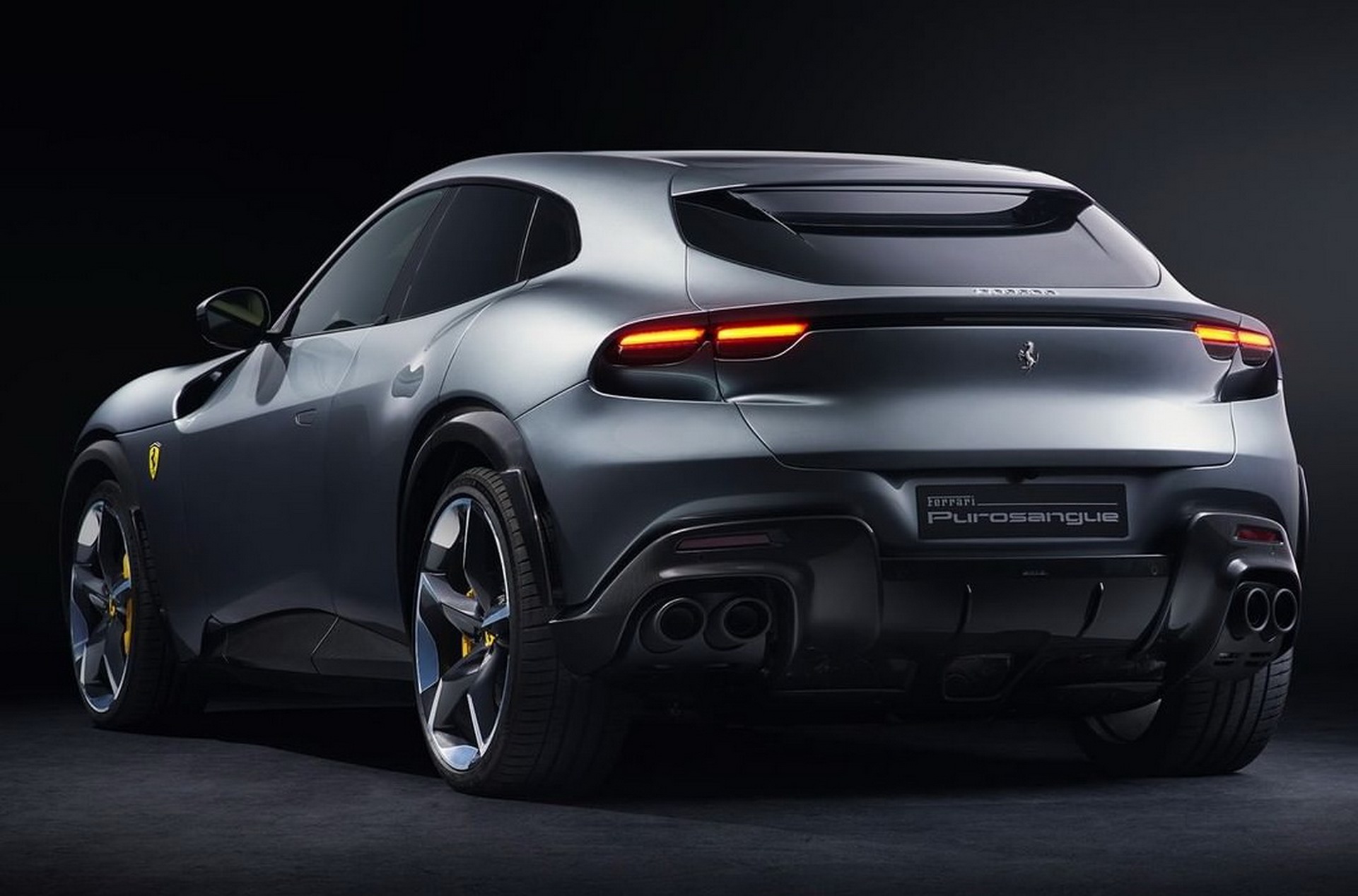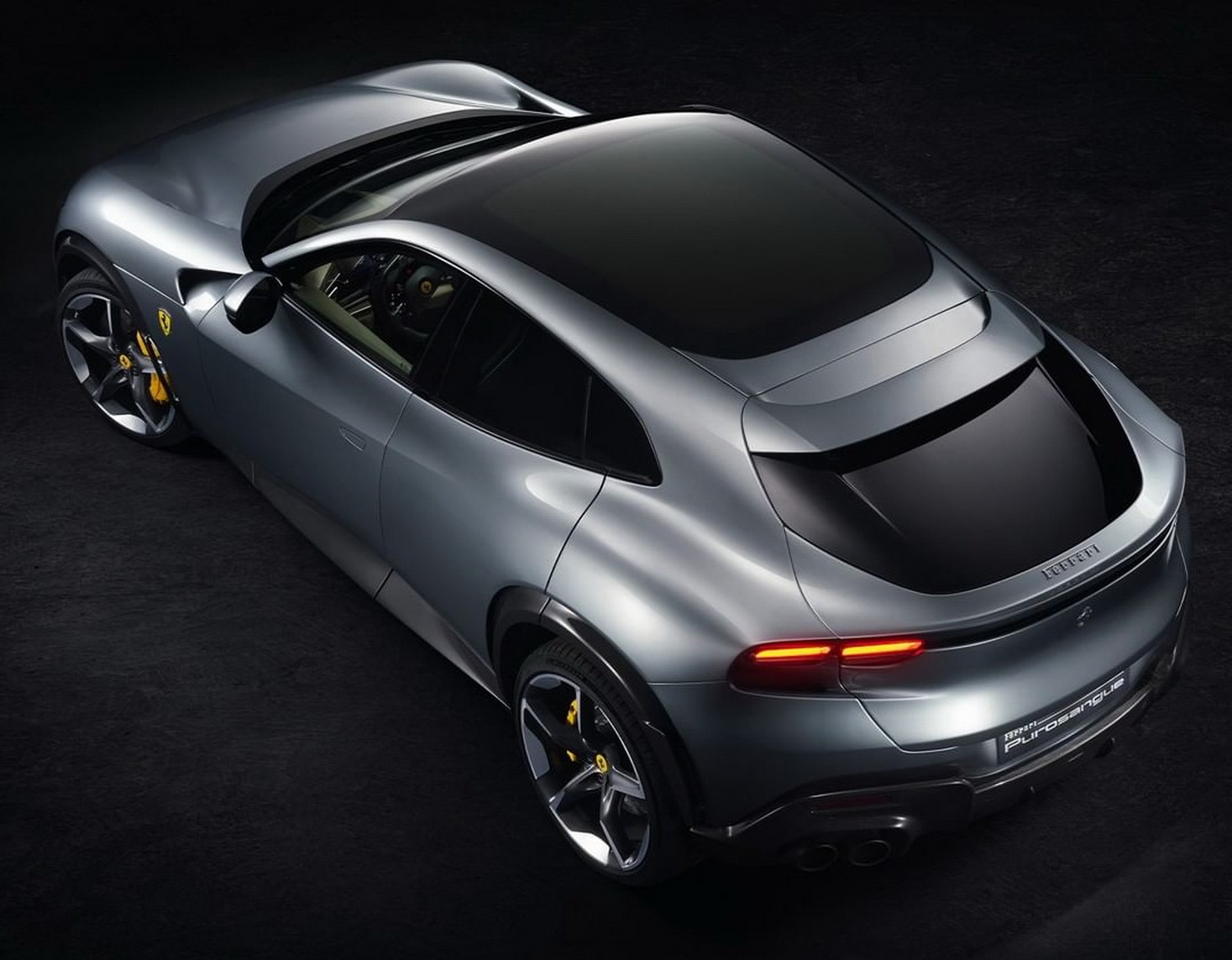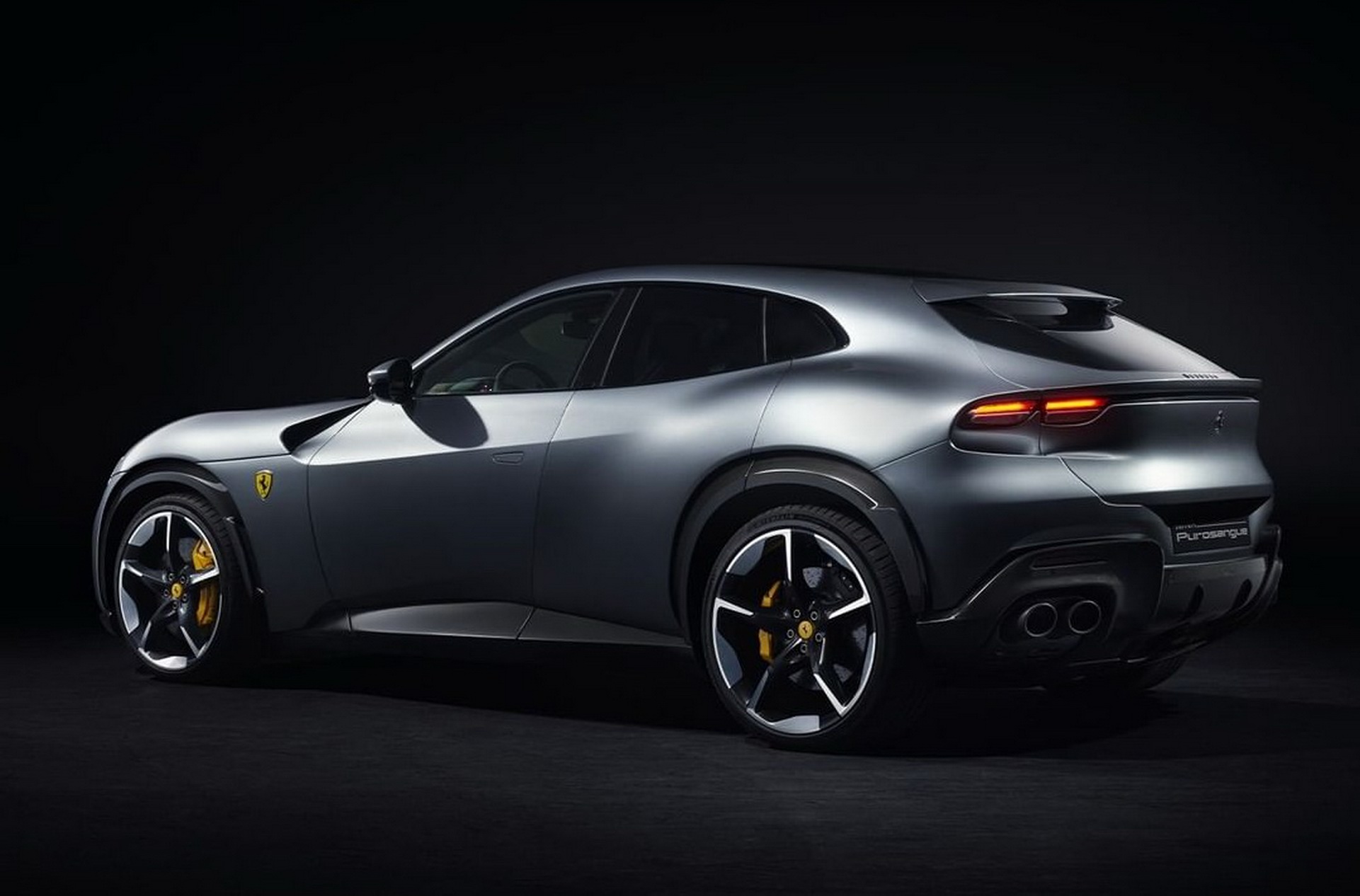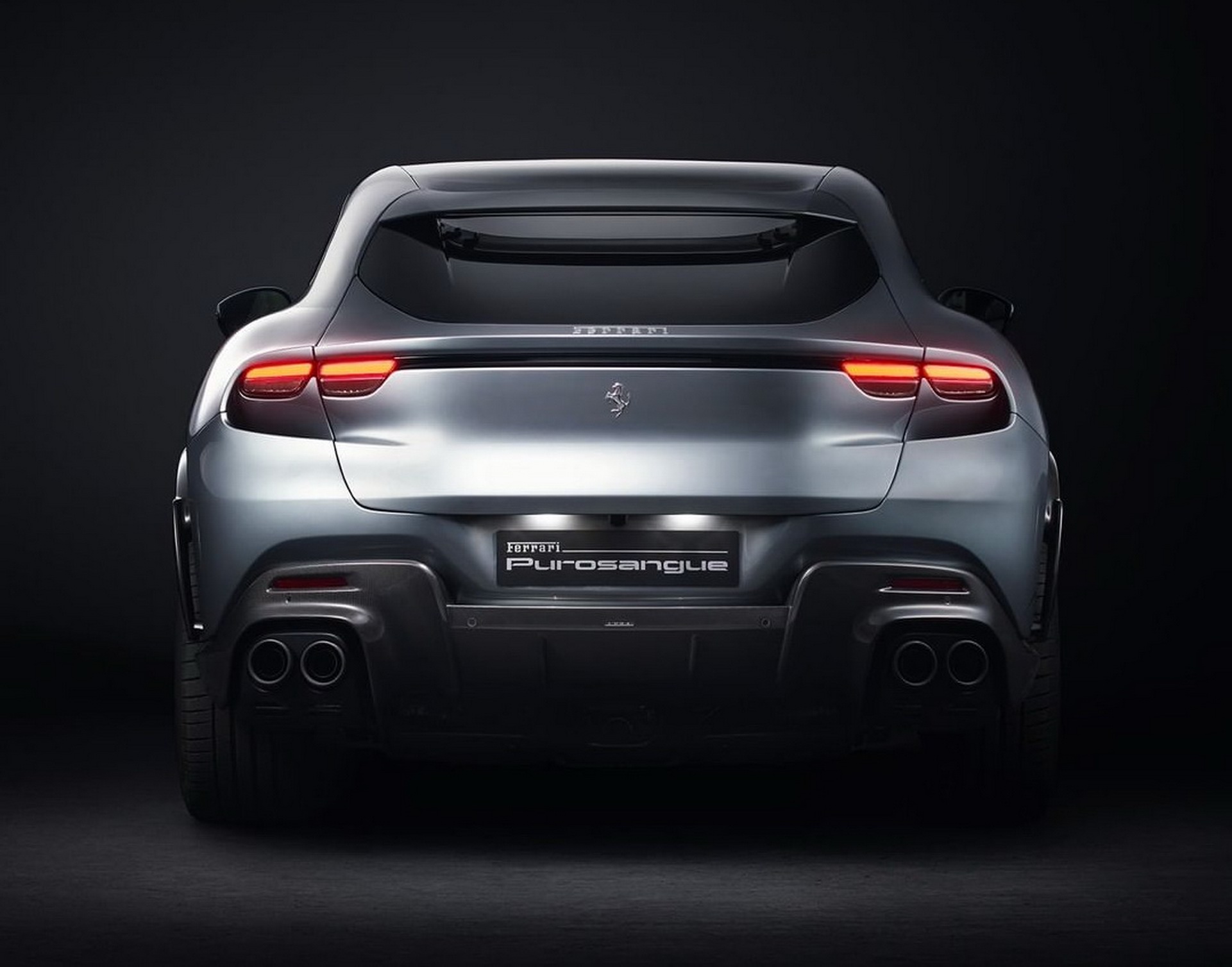The 2023 Ferrari Purosangue might be late to the luxury crossover/SUV party, but with handsome Roma-inspired styling, a V12 up front and a 193 mph (310 kmh) top speed, it looks like it was worth the wait.
And what a wait. It has taken 75 years for Ferrari to produce its first production four-door machine, a car that will go into battle with the most expensive versions of the Aston Martin DBX, Lamborghini Urus, Bentley Bentayga, and the Rolls Royce Cullinan. Only McLaren has been slower to embrace changing market trends.
The 2023 Purosangue has room for a family, rear-hinged back doors, a practical opening hatch for luggage, and all-wheel drive so it can be used year-round. And unlike rivals that have chosen to build SUV-shaped cars, Ferrari has opted for a crossover body style that stands a modest 62.6 inches (1,589 mm) from the ground. That might mean it gives away some headroom to its rivals, but also allows sleeker styling and a lower center of gravity (aided by a carbon roof panel) that should yield handling benefits.
Related: Ferrari Roma Spider Prototype Caught Testing With Heavy Camouflage
The exterior design of the 195.8-inch (4,973 mm) aluminium body draws heavily on Ferrari’s elegant Roma coupe. The pinched waist, the shape of the rear diffuser panel housing the quad exhaust tailpipes and the front and rear light treatments all echo design features on the two-door car, and give the Purosangue an elegant aesthetic unmatched by competitor cars. Also marking it out from all rivals other than the Rolls Royce Cullinan are its rear-hinged doors, while the unusual “floating” wheelarch trim gives us a new take on arch extensions, and mean even the 22-inch front and 23-inch rear wheels don’t look awkwardly large.
V12 power
But where the Purosangue really attempts to assert its superiority over other luxury SUVs, is under the long hood. V6, V8 engines and hybrid power will all likely come later, but the launch model features a naturally aspirated 6.5-liter V12 that develops 715 hp (725 PS) and 528 lb-ft (716 Nm) of torque, and spins to 8,250 rpm. That’s mated to an all-wheel drive system via an eight-speed dual-clutch transmission that’s mounted at the back, just like on Ferrari’s GT cars, and helps give the Purosangue an impressive 49 : 51, front : rear, weight distribution.
Aston Martin’s DBX707 comes close on power (697 hp / 707 PS), but doesn’t have a V12. Neither does the new Lamborghini Urus Performante, and that only makes 657 hp (666 PS). The Bentley Bentagya is available with a W12 but can only muster 626 hp (635 PS) and won’t be anywhere near as agile. And all three rely on noise- and response-sapping turbochargers to deliver their power.
That said, both the DBX and Urus claim to match the Purosangue’s 3.3-second zero to 62 mph (100 km/h) time, and though the Lambo runs out of puff at 190 mph (306 km/h), the Aston can keep pace with the Ferrari at its 193 mph (310 km/h) maximum.
Related: Hardcore Ferrari SF90 Version Speciale Caught Testing At Nürburging With Huge Rear Wing
Although this isn’t Ferrari’s first all-wheel drive car, it is the first to feature hill-descent control, something that would have seemed unimaginable 20 years ago. It’s also the first Ferrari to feature active roll control. Active anti-roll bars have become commonplace on large luxury cars, but Ferrari achieves its roll control through the use of electronically controlled Multimatic spool-valve dampers. That should help with axle articulation on uneven ground, while also stiffening the chassis for high-speed driving. But they can’t raise the ride height (it’s fixed at 7.2 inches / 183 mm), which will limit its off-road ability, and we can’t be the only ones to notice that Ferrari’s press info doesn’t contain a Fiorano lap time.
No central touchscreen
The Purosangue is a very different kind of Ferrari, and one that gives us yet another different interior design. While other carmakers like Porsche tend to give their cars very similar dashboards, Ferrari seems to change tack from car to car. So while the Purosangue might look vaguely like a Roma on the outside, it’s very different on the inside, looking more like half a 296 GTB interior that is mirrored on the other side of the cabin. There’s no large central touchscreen – instead, both driver and passenger get their own large display screen.
Ferrari hasn’t revealed prices for the Purosangue, but it’s likely to cost close to $400,000, making it substantially more expensive than most of the other supercar SUVs on the market. Do you like Ferrari’s entry into the luxury off-roader space? Leave a comment and let us know.




